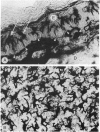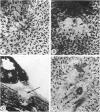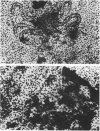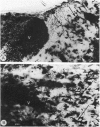Abstract
Resistance to tick feeding has previously been shown to be an acquired, immunologically mediated phenomenon in guinea-pigs, associated with cutaneous basophil hypersensitivity to tick antigens. In this study, Langerhans cells (LC) in the epidermis of guinea-pigs were monitored during tick infestations of susceptible and resistant animals. A specific adenosine triphosphatase (ATPase) staining technique was used to identify epidermal LC. The numbers of LC decreased significantly around the sites of tick attachment during primary infestations. Early in the secondary infestations, increases in numbers of LC were observed in the epidermis surrounding tick mouth-parts. These changes in LC populations resemble those previously described in contact dermatitis reactions of guinea-pigs.
Full text
PDF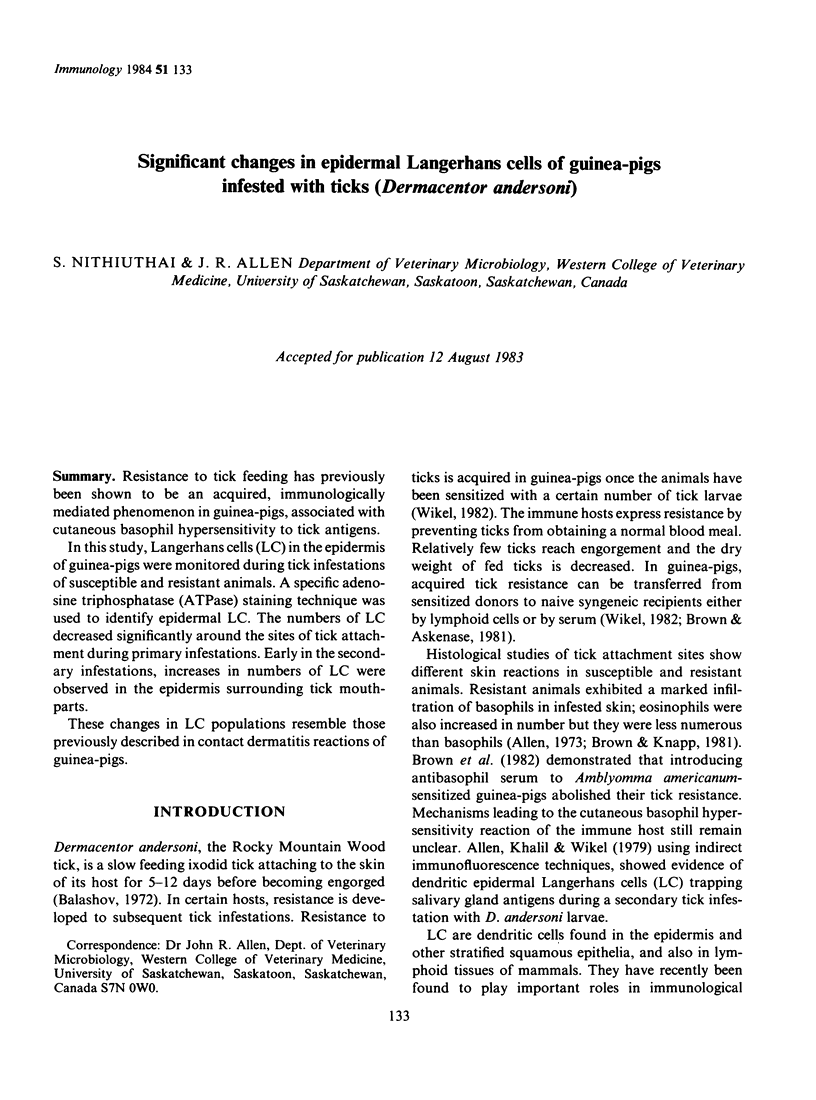
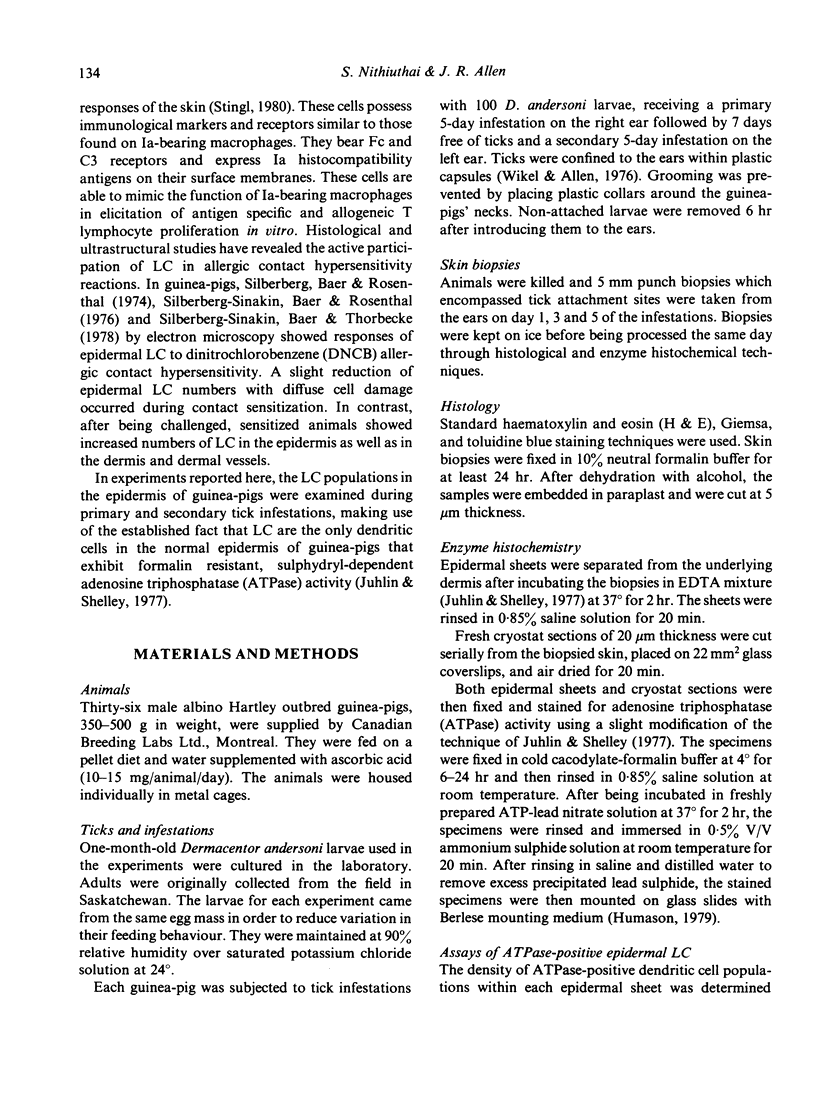
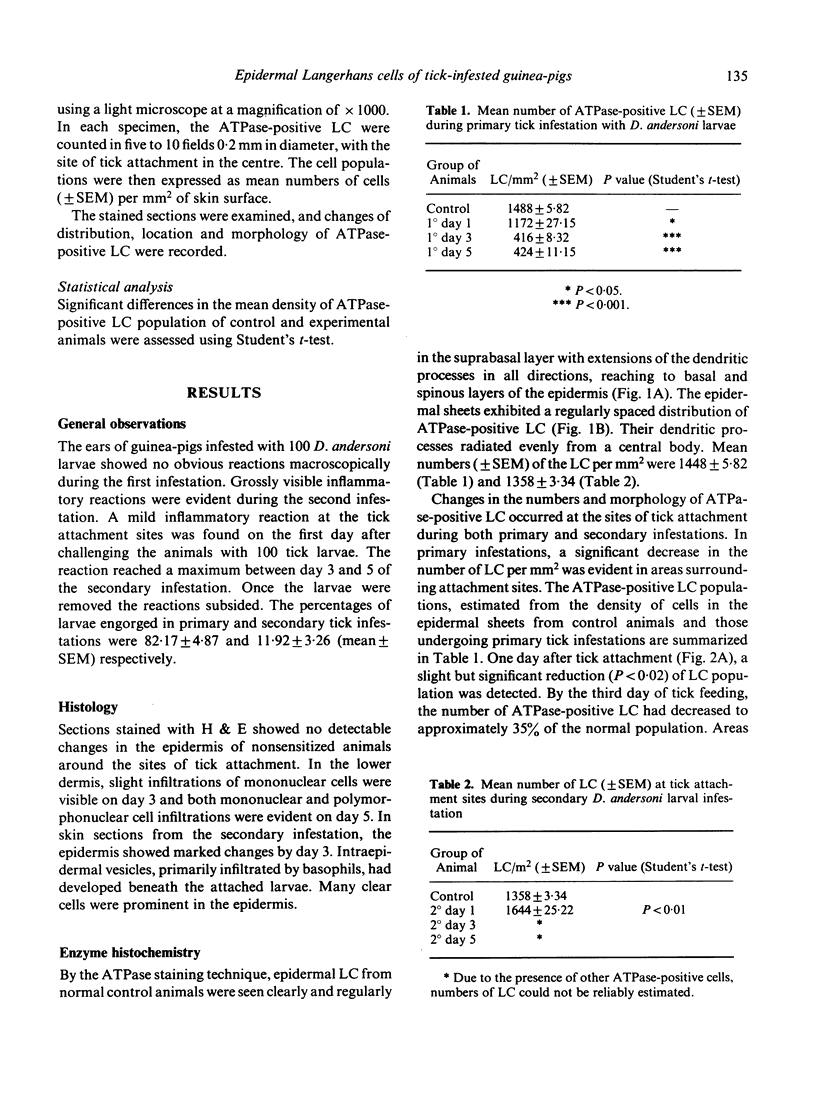
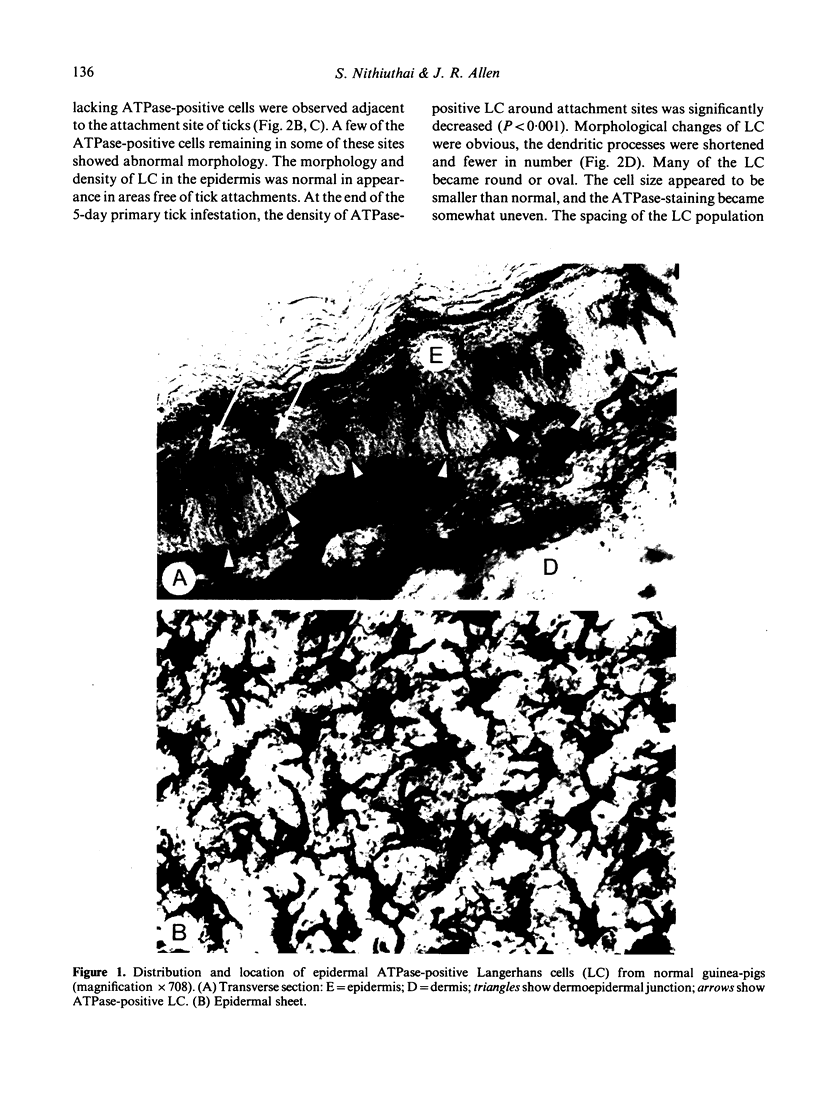
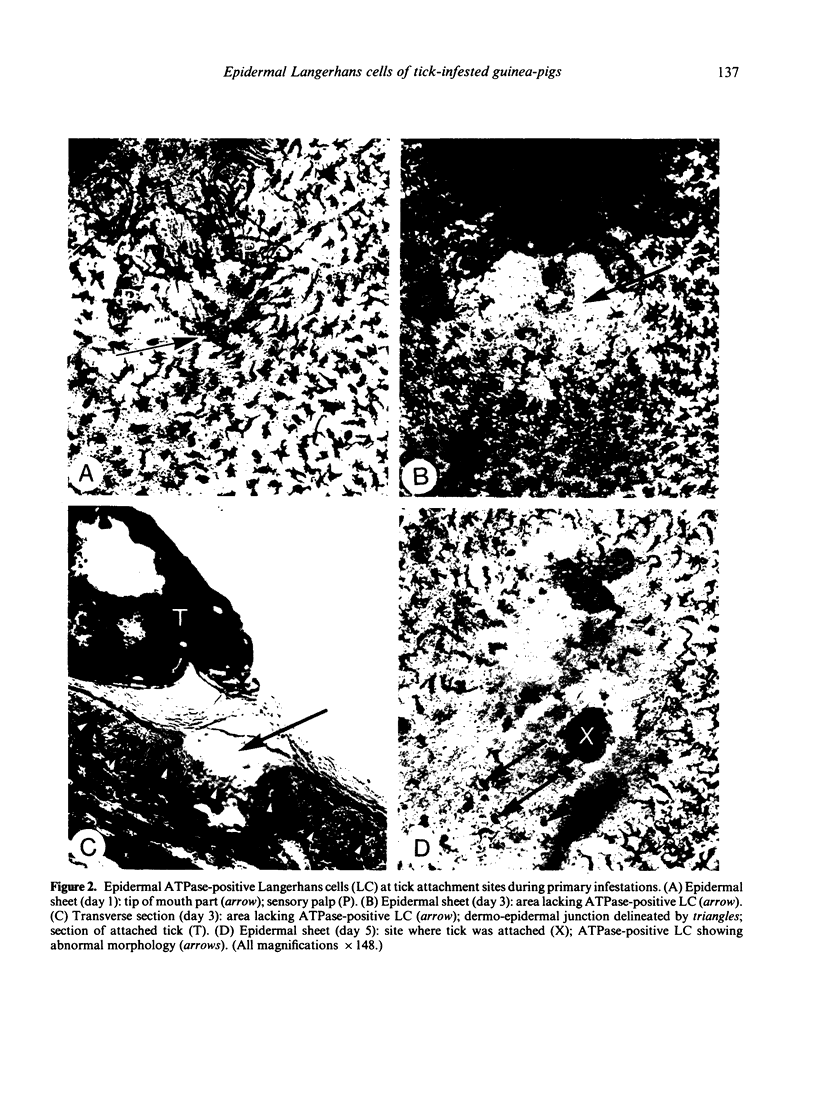
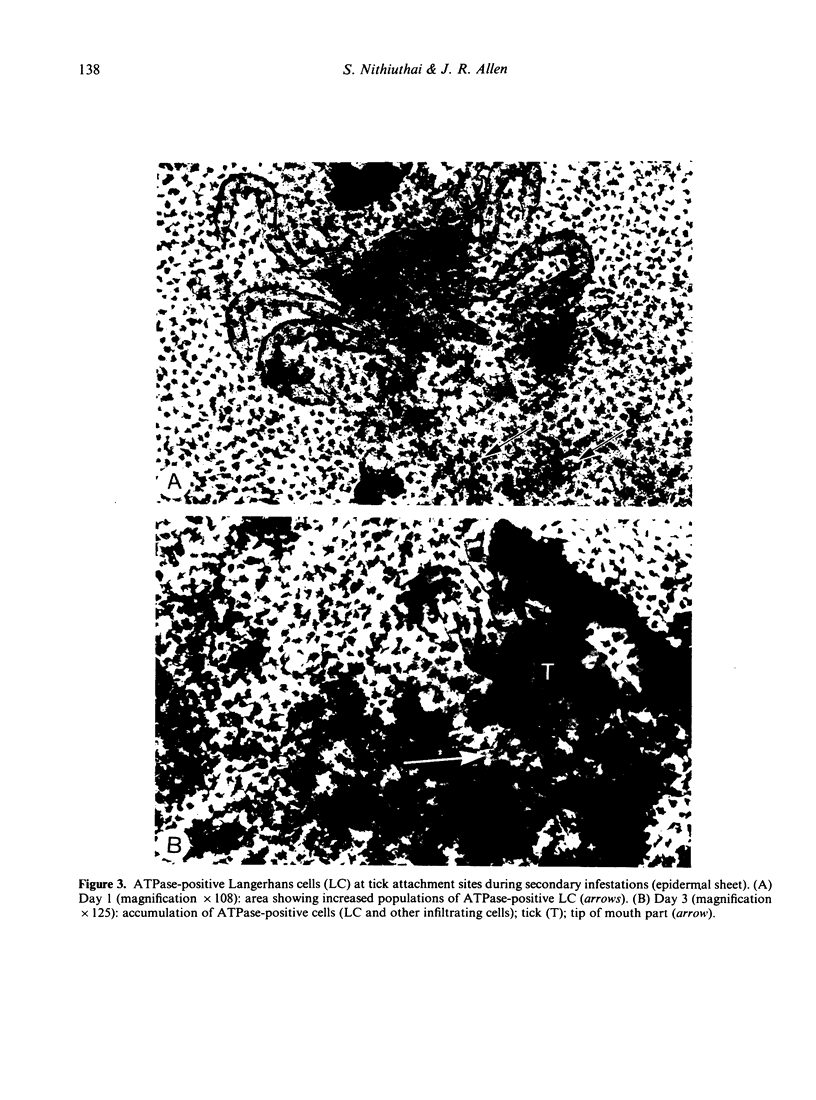
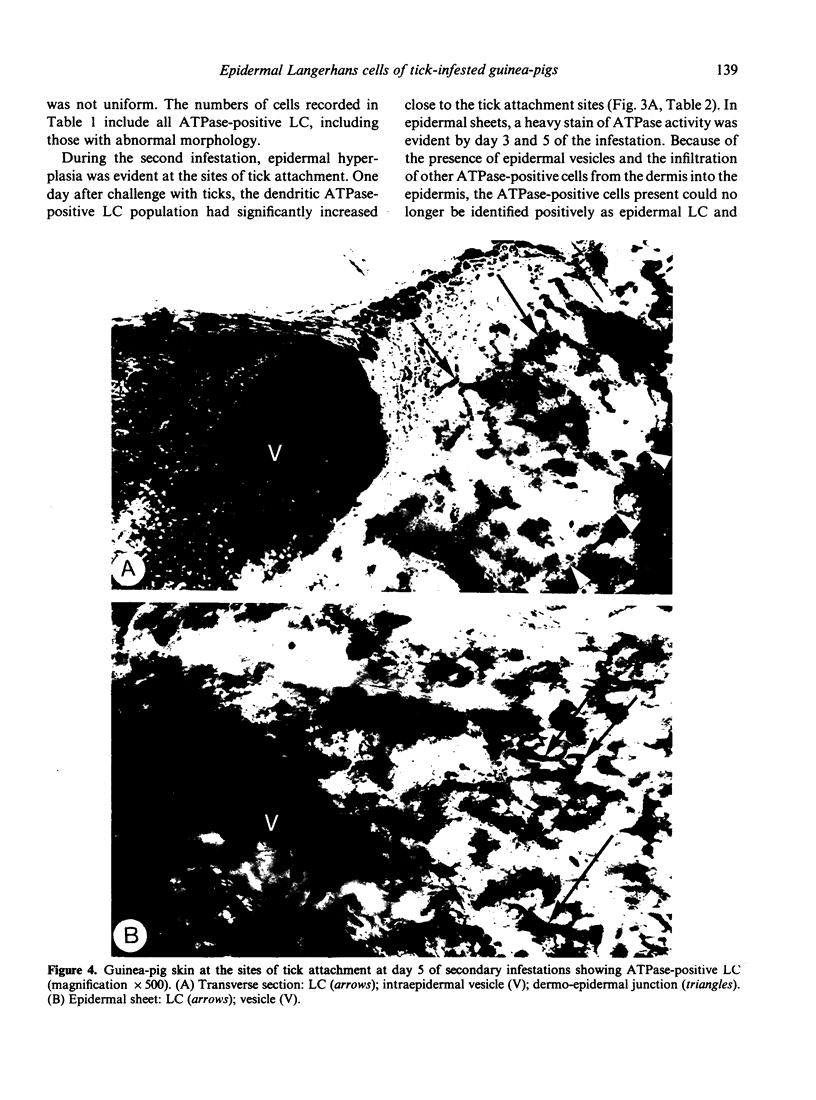
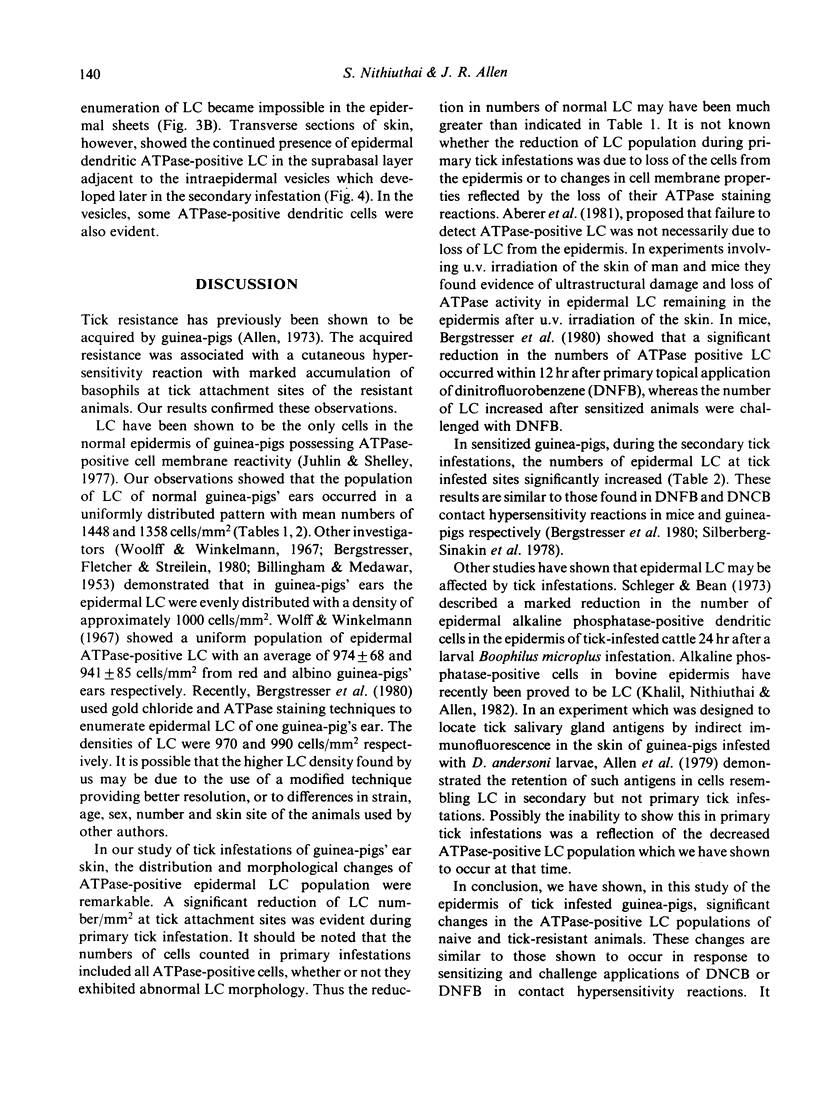
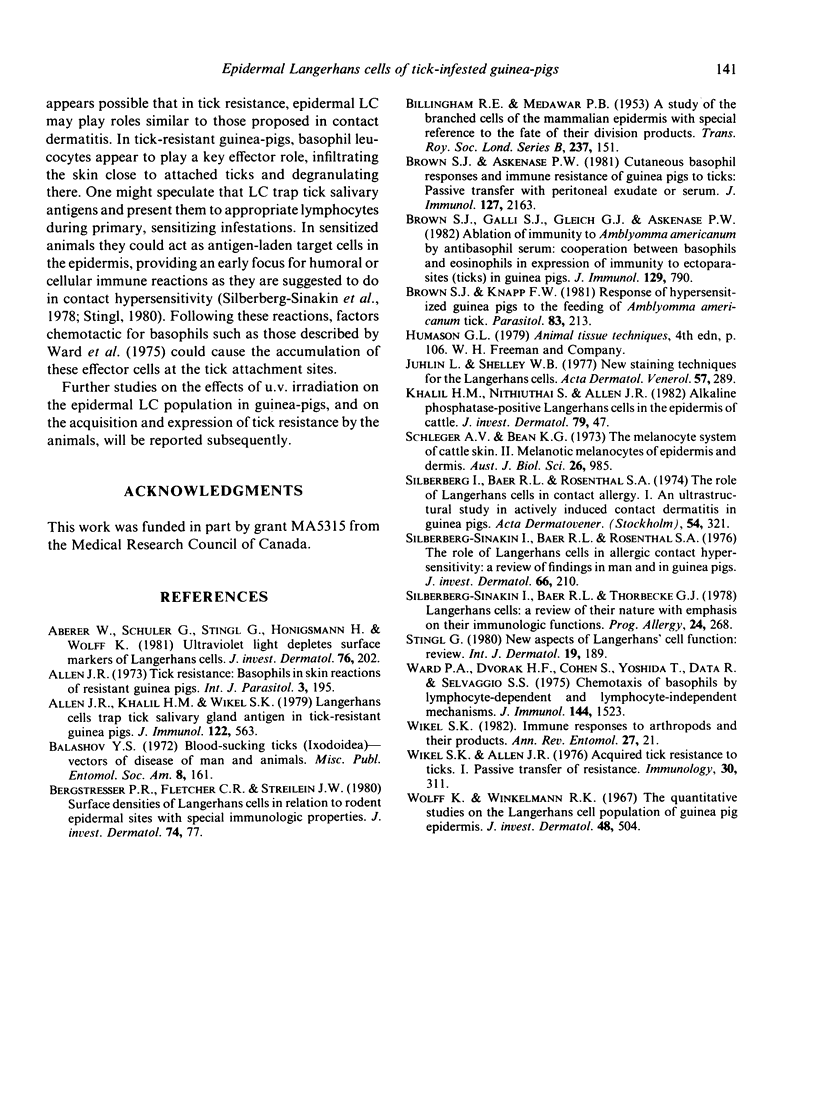
Images in this article
Selected References
These references are in PubMed. This may not be the complete list of references from this article.
- Aberer W., Schuler G., Stingl G., Hönigsmann H., Wolff K. Ultraviolet light depletes surface markers of Langerhans cells. J Invest Dermatol. 1981 Mar;76(3):202–210. doi: 10.1111/1523-1747.ep12525745. [DOI] [PubMed] [Google Scholar]
- Allen J. R., Khalil H. M., Wikel S. K. Langerhans cells trap tick salivary gland antigens in tick-resistant guinea pigs. J Immunol. 1979 Feb;122(2):563–565. [PubMed] [Google Scholar]
- Allen J. R. Tick resistance: basophils in skin reactions of resistant guinea pigs. Int J Parasitol. 1973 Mar;3(2):195–200. doi: 10.1016/0020-7519(73)90024-6. [DOI] [PubMed] [Google Scholar]
- Bergstresser P. R., Fletcher C. R., Streilein J. W. Surface densities of Langerhans cells in relation to rodent epidermal sites with special immunologic properties. J Invest Dermatol. 1980 Feb;74(2):77–80. doi: 10.1111/1523-1747.ep12519909. [DOI] [PubMed] [Google Scholar]
- Brown S. J., Askenase P. W. Cutaneous basophil responses and immune resistance of guinea pigs to ticks: passive transfer with peritoneal exudate cells or serum. J Immunol. 1981 Nov;127(5):2163–2167. [PubMed] [Google Scholar]
- Brown S. J., Galli S. J., Gleich G. J., Askenase P. W. Ablation of immunity to Amblyomma americanum by anti-basophil serum: cooperation between basophils and eosinophils in expression of immunity to ectoparasites (ticks) in guinea pigs. J Immunol. 1982 Aug;129(2):790–796. [PubMed] [Google Scholar]
- Brown S. J., Knapp F. W. Response of hypersensitized guinea pigs to the feeding of Amblyomma americanum ticks. Parasitology. 1981 Aug;83(Pt 1):213–223. doi: 10.1017/s0031182000050174. [DOI] [PubMed] [Google Scholar]
- Juhlin L., Shelley W. B. New staining techniques for the Langerhans cell. Acta Derm Venereol. 1977;57(4):289–296. [PubMed] [Google Scholar]
- Khalil H. M., Nitiuthai S., Allen J. R. Alkaline phosphatase-positive Langerhans cells in the epidermis of cattle. J Invest Dermatol. 1982 Jul;79(1):47–51. doi: 10.1111/1523-1747.ep12510584. [DOI] [PubMed] [Google Scholar]
- Schleger A. V., Bean K. G. The melanocyte system of cattle skin. II. Melanotic melanocytes of epidermis and dermis. Aust J Biol Sci. 1973 Aug;26(4):985–997. doi: 10.1071/bi9730985. [DOI] [PubMed] [Google Scholar]
- Silberberg-Sinakin I., Baer R. L., Thorbecke G. J. Langerhans cells: a review of their nature with emphasis on their immunologic functions. Prog Allergy. 1978;24:268–294. [PubMed] [Google Scholar]
- Silberberg I., Baer R. L., Rosenthal S. A. The role of Langerhans cells in allergic contact hypersensitivity. A review of findings in man and guinea pigs. J Invest Dermatol. 1976 Apr;66(4):210–217. doi: 10.1111/1523-1747.ep12482139. [DOI] [PubMed] [Google Scholar]
- Silberberg I., Baer R. L., Rosenthal S. A. The role of langerhans cells in contact allergy. I. An ultrastructural study in actively induced contact dermatitis in guinea pigs. Acta Derm Venereol. 1974;54(5):321–331. [PubMed] [Google Scholar]
- Stingl G. New aspects of Langerhans' cell function. Int J Dermatol. 1980 May;19(4):189–213. doi: 10.1111/j.1365-4362.1980.tb00297.x. [DOI] [PubMed] [Google Scholar]
- Ward P. A., Dvorak H. F., Cohen S., Yoshida T., Data R., Selvaggio S. S. Chemotaxis of basophils by lymphocyte-dependent and lymphocyte-independent mechanisms. J Immunol. 1975 May;114(5):1523–1531. [PubMed] [Google Scholar]
- Wikel S. K., Allen J. R. Acquired resistance to ticks. I. Passive transfer of resistance. Immunology. 1976 Mar;30(3):311–316. [PMC free article] [PubMed] [Google Scholar]
- Wolff K., Winkelmann R. K. Quantitative studies on the Langerhans cell population of guinea pig epidermis. J Invest Dermatol. 1967 Jun;48(6):504–513. doi: 10.1038/jid.1967.82. [DOI] [PubMed] [Google Scholar]



